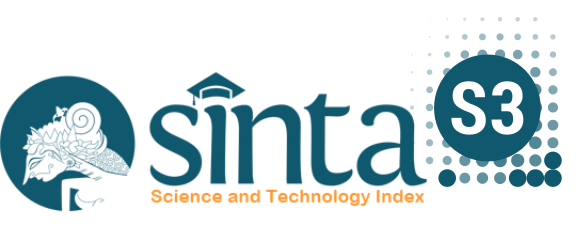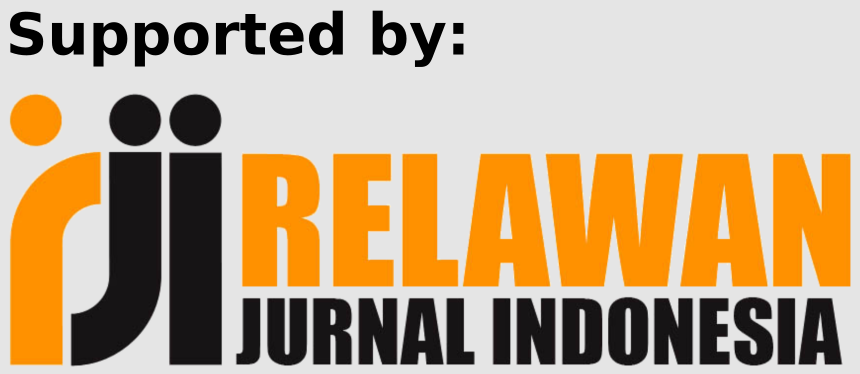The relationship between childhood trauma in mothers and maternal-fetal attachment: A scoping review
DOI:
https://doi.org/10.31101/jhtam.3757Abstract views 543 times
Keywords:
Childhood trauma, Maternal-Fetal Attachment, experienceAbstract
Downloads
References
Alvarenga, Teixeira, & Peixoto. (2015). Apego Materno-Fetal e a Percepção Materna acerca da Capacidade Interativa do Bebê no Primeiro Mês. Psico, 46(3), 340.
Beilharz, Paterson, Fatt, Wilson, Burton, Cvejic, & Vollmer-Conna. (2019). The impact of childhood trauma on psychosocial functioning and physical health in a non-clinical community sample of young adults. Australian & New Zealand Journal of Psychiatry, 54(2), 185–194. https://doi.org/10.1177/0004867419881206
BJM. (2022). Childhood trauma may heighten risk of pregnancy complications | BMJ. https://www.bmj.com/company/newsroom/childhood-trauma-may-heighten-subsequent-risk-of-pregnancy-complications/
Blackmore, Putnam, Pressman, Rubinow, Putnam, Matthieu, & O’Connor. (2016). The Effects of Trauma History and Prenatal Affective Symptoms on Obstetric Outcomes. Journal of Traumatic Stress, 29(3), 245–252. https://doi.org/10.1002/jts.22095
Brown, Eisner, Walker, Tomlinson, Fearon, Dunne, & Murray. (2021). The impact of maternal adverse childhood experiences and prenatal depressive symptoms on foetal attachment: Preliminary evidence from expectant mothers across eight middle-income countries. Journal of Affective Disorders, 296(9), 612–619. https://doi.org/10.1016/j.jad.2021.08.066
Camarneiro, Justo, & Miranda, D. (2017). Prenatal attachment and sociodemographic and clinical factors in Portuguese couples. Journal of Reproductive and Infant Psychology, 35(3), 212–222.
Chaves, Campos, & Nobre. (2021). Mother-child bonding, environment, and motor development of babies at risk accompanied by a follow-up. Revista Brasileira de Saude Materno Infantil, 21(4), 1015–1023. https://doi.org/10.1590/1806-93042021000400004
Christie, Talmon, Schäfer, Haan, D., Vang, Haag, & Brown. (2017). The transition to parenthood following a history of childhood maltreatment: A review of the literature on prospective and new parents’ experiences. European Journal of Psychotraumatology, 8(7). https://doi.org/10.1080/20008198.2018.1492834
Cildir, A., Ozbek, Topuzoglu, Orcin, & Janbakhishov. (2020). Association of prenatal attachment and early childhood emotional, behavioral, and developmental characteristics: A longitudinal study. Infant Mental Health Journal, 41(4), 517–529. https://doi.org/10.1002/imhj.21822
Cooke, Racine, Plamondon, Tough, & Madigan. (2019). Maternal adverse childhood experiences, attachment style, and mental health: Pathways of transmission to child behavior problems. Child Abuse and Neglect, 93(4), 27–37. https://doi.org/10.1016/j.chiabu.2019.04.011
Downey, & Crummy. (2022). The impact of childhood trauma on children’s wellbeing and adult behavior. European Journal of Trauma and Dissociation, 6(1), 100237. https://doi.org/10.1016/j.ejtd.2021.100237
Farokh. (2017). Anxiety and Its Relationship With Maternal Fetal Attachment In Pregnant Women In Southeast of Iran. I-Manager’s Journal on Nursing, 7(3), 16.
Fields, Ciciolla, Addante, Erato, Quigley, Mullins-Sweatt, & Shreffler. (2023). Maternal Adverse Childhood Experiences and Perceived Stress During Pregnancy: The Role of Personality. Journal of Child & Adolescent Trauma, 16(3), 649–657.
Garon-Bissonnette, Bolduc, Lemieux, & Berthelot. (2022). Cumulative childhood trauma and complex psychiatric symptoms in pregnant women and expecting men. BMC Pregnancy and Childbirth, 22(1), 10.
Golbasi, Ucar, & Tugut. (2015). Validity and reliability of the T urkish version of the M aternal A ntenatal A ttachment S cale. Japan Journal of Nursing Science, 12(2), 154–161. https://doi.org/10.1111/jjns.12052
Goldstein, & Briggs-gowan. (2022). The effects of Intimate Partner Violence and a history of Childhood Abuse on Mental Health and Stress during Pregnancy. Midwifery and Reproduction, 36(3), 337–346. https://doi.org/10.1007/s10896-020-00149-1.The
Hopkins, Miller, Butler, Gibson, Hedrick, & Boyle. (2018). The relation between social support, anxiety and distress symptoms and maternal fetal attachment. Journal of Reproductive and Infant Psychology, 36(4), 381–392. https://doi.org/10.1080/02646838.2018.1466385
Infurna, Fazio, Bevacqua, Costanzo, Falgares, Maiorana, & Antonucci. (2024). Understanding the relationship between childhood emotional abuse and neglect and psychological distress in pregnant women: The role of prenatal attachment. BMC Psychology, 12(1), 520. https://doi.org/10.1186/s40359-024-02024-w
Kumari. (2020). Emotional abuse and neglect: Time to focus on prevention and mental health consequences.97–599. The British Journal of Psychiatry, 217(5), 5. https://doi.org/10.1192/bjp.2020.154
Lange, Ven, van de, & Schrieken. (2013). Interapy: Treatment of post-traumatic stress via the internet. Cognitive Behaviour Therapy, 32(3), 110–124. https://doi.org/10.1080/16506070302317
Mamun, Biswas, Scott, Sly, McIntyre, Thorpe, & Callaway. (2013). Adverse childhood experiences, the risk of pregnancy complications and adverse pregnancy outcomes: A systematic review and meta-analysis. BMJ Open, 2(3), 1–13. https://doi.org/10.1136/ bmjopen-2022-063826
Martucci, Aceti, Giacchetti, & Sogos. (2021). The mother-baby bond: A systematic review about perinatal depression and child developmental disorders. Rivista Di Psichiatria, 56(5), 223–236. https://doi.org/10.1708/3681.36670
McKenna, Knight, Smith, Corwin, Carter, Palmer, & Brennan. (2023). Infant epigenetic aging moderates the link between Black maternal childhood trauma and offspring symptoms of psychopathology. Development and Psychopathology, 16(3), 1–13. https://doi.org/10.1017/S0954579423001232
Mohamadirizi, & Kordi. (2016). The relationship between multi-dimensional self-compassion and fetal-maternal attachment in prenatal period in referred women to Mashhad Health Center. Journal of Education and Health Promotion, 5(1), 21.
Pandey, Raushan, Gautam, & Neogi. (2023). Alarming Trends of Cesarean Section—Time to Rethink: Evidence From a Large-Scale Cross-sectional Sample Survey in India. Journal of Medical Internet Research, 25(2), e41892. https://doi.org/10.2196/41892
Punamäki, Isosävi, Qouta, Kuittinen, & Diab. (2017). War trauma and maternal–fetal attachment predicting maternal mental health, infant development, and dyadic interaction in Palestinian families. Attachment & Human Development, 19(5), 463–486. https://doi.org/10.1080/14616734.2017.1330833
Roche, Kroska, Miller, Kroska, & O’Hara. (2019). Childhood trauma and problem behavior: Examining the mediating roles of experiential avoidance and mindfulness processes. Journal of American College Health, 67(1), 17–26.
Rubertsson, Pallant, Sydsjö, Haines, & Hildingsson. (2015). Maternal depressive symptoms have a negative impact on prenatal attachment – findings from a Swedish community sample. Journal of Reproductive and Infant Psychology, 33(2), 153–164. https://doi.org/10.1080/02646838.2014.992009
Rusanen, Lahikainen, Pölkki, Saarenpää-Heikkilä, & Paavonen. (2018). The significance of supportive and undermining elements in the maternal representations of an unborn baby. Journal of Reproductive and Infant Psychology, 36(3), 261–275. https://doi.org/10.1080/02646838.2018.1462476
Sahin, Merve, & Erbill. (2023). Relationship between maternal antenatal attachment and traumatic childbirth.pdf. Intl J Gynecology Obste.
Stigger, Martins, Matos, Trettim, Cunha, Scholl, & Quevedo. (2020). Is maternal exposure to childhood trauma associated with maternal-fetal attachment? Interpersona, 14(2), 200–210.
Stoltenborgh, Bakermans‐Kranenburg, Alink, & IJzendoorn, V. (2015). The Prevalence of Child Maltreatment across the Globe: Review of a Series of Meta‐Analyses. Child Abuse Review, 24(1), 37–50. https://doi.org/10.1002/car.2353
Ven, van de, Heuvel, van den, Bhogal, Lewis, & Thomason. (2020). Impact of maternal childhood trauma on child behavioral problems: The role of child frontal alpha asymmetry. Developmental Psychobiology, 62(2), 154–169. https://doi.org/10.1002/dev.21900
Downloads
Published
How to Cite
Issue
Section
License
Copyright (c) 2024 Elfrida Yustina Abuk, Endang Koni Suryaningsih, Mufdlilah Mufdlilah

This work is licensed under a Creative Commons Attribution-ShareAlike 4.0 International License.
Authors who publish with Journal of Health Technology Assessment in Midwifery agree to the following terms:
- Authors retain copyright and grant the journal right of first publication with the work simultaneously licensed under a Creative Commons Attribution License (CC BY-SA 4.0) that allows others to share the work with an acknowledgment of the work's authorship and initial publication in this journal.
- Authors are able to enter into separate, additional contractual arrangements for the non-exclusive distribution of the journal's published version of the work (e.g., post it to an institutional repository or publish it in a book), with an acknowledgment of its initial publication in this journal.
- Authors are permitted and encouraged to post their work online (e.g., in institutional repositories or on their website) prior to and during the submission process, as it can lead to productive exchanges, as well as earlier and greater citation of published work.

Journal of Health Technology Assessment in Midwifery is licensed under a Creative Commons Attribution-ShareAlike 4.0 International License..













